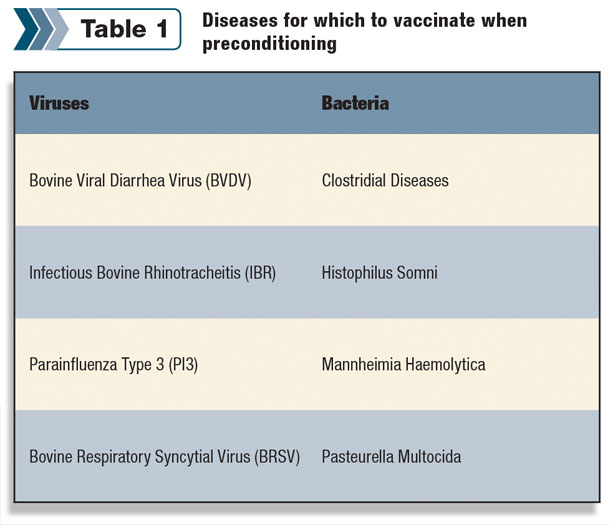The manner in which we work with these calves and prepare them for their next location can have dramatic effects on their feed conversion, immune function and, ultimately, mortality rate. During this period, we must strive to minimize stress and thereby maximize health and overall efficiency.
The idea of preconditioning calves, or preparing them for success in the feedlot, is not a new concept and can take on many different forms. The ultimate goal of preconditioning calves is to maximize calf health at the time they leave the ranch, while backgrounding and during their stay in the feedlot.
Practices such as nutritional management, vaccination while still nursing, two-step weaning and delaying shipping after weaning have all been shown to increase feed efficiency and reduce mortality once in the feedlot.
One of the great benefits of preconditioning calves is to maximize the response and development of their immune systems to common bovine diseases. Although it requires processing cattle an additional time, calves should be vaccinated prior to weaning and then placed back on the cow to continue nursing to reduce stress.
Stress, among other effects, causes the release of cortisol in the calf, which lowers immunity and the immune response to vaccines and disease. By avoiding two different sources of stress at the same time (vaccination and weaning), we can significantly improve the calf’s immune system response to the vaccine – and therefore its future disease resistance.

Immune system function is influenced by many factors, including nutrition and trace mineral balance. Once calves have entered the feedyard, their dietary rations will be balanced and closely monitored, and gaps in energy content or certain minerals will be virtually eliminated. Until that point, however, deficiencies can have a significant impact on growth and health.
Trace minerals are integral parts of enzymes in the calf’s body that affect the development of antibodies and the function of white blood cells during inflammatory processes. While it’s not recommended to supplement beyond the animal’s basic requirements, it is important to know the mineral status of the herd to prevent deficiencies.
The minerals that are most important to be aware of at this age are copper, selenium and zinc. There are vast regional differences in the soil and forage mineral content, even within the same state, that can complicate balancing a ration.
Supplementation with mineral tubs, oral boluses and mineral injections are various ways to increase mineral levels for cattle. In general, continuous oral supplements will maintain mineral levels more constantly than injectable forms.
Be sure to work with your regular veterinarian to maintain a solid nutritional foundation and the appropriate vaccination protocol for your herd.
Communicating with the feedyard will be a critical factor in protocol design, as many companies will have requirements for specific product use and timing. Compliance with these will increase the value of the calf and set them up for a healthy growing and finishing phase. ![]()
Bret McNabb, DVM, MPVM, DACT, is chief of service at University of California – Davis VMTH Livestock Herd Health and Reproduction Service.

-
Bret McNabb
- Assistant Professor
- University of California – Davis School of Veterinary Medicine
- Email Bret McNabb







